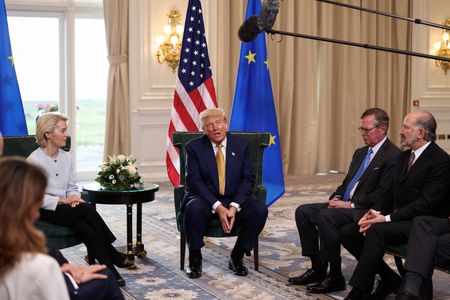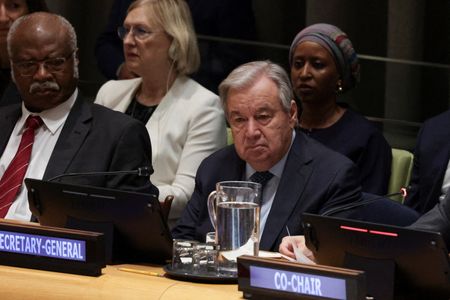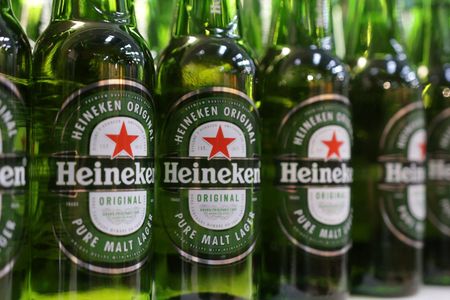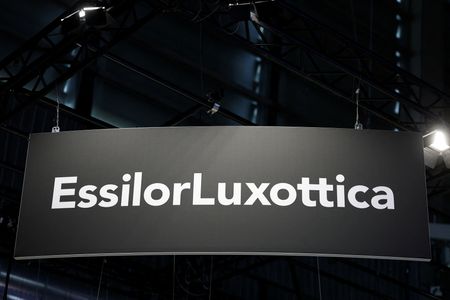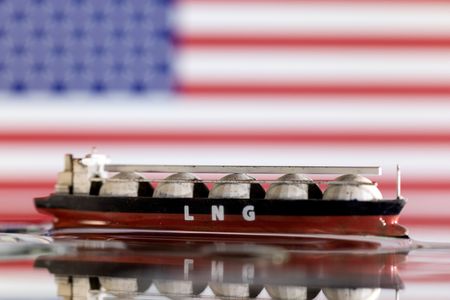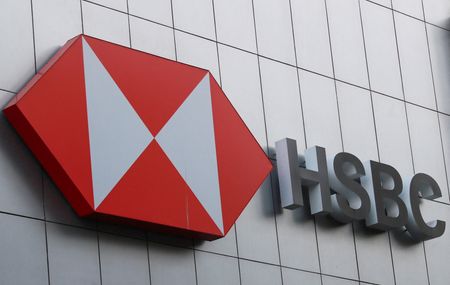By Philip Blenkinsop and Michel Rose
BRUSSELS (Reuters) -France denounced the trade agreement between the European Union and the U.S. as a “submission” on Monday though other EU states largely backed a deal they acknowledged was lopsided but which averts an economically damaging trade war with Washington.
The framework deal, announced on Sunday between two economies accounting for almost a third of global trade, will see the U.S. impose a 15% import tariff on most EU goods from next month, but offers some protection for critical industries like cars and pharmaceuticals.
That is half the rate Washington had threatened, though much more than Europeans hoped for.
U.S. President Donald Trump, who has sought to leverage tariff threats to reshape global trade since returning to the White House this year, feted the accord on Sunday during a trip to Scotland, calling it “the biggest deal ever made”.
But France, Europe’s second largest economy, poured scorn on the agreement.
“It is a dark day when an alliance of free peoples, brought together to affirm their common values and to defend their common interests, resigns itself to submission,” Prime Minister Francois Bayrou wrote on X.
French President Emmanuel Macron made no public comment.
While the mood among other European governments was decidedly sombre, most agreed that the failure to strike a deal would have been disastrous.
“This agreement has succeeded in averting a trade conflict that would have hit the export-orientated German economy hard,” said German Chancellor Friedrich Merz, who heads the 27-nation EU bloc’s largest economy.
Speaking to journalists on Monday, the top trade official for the European Commission, which negotiates trade deals for the EU, said allowing the 30% tariffs to be imposed would have been “much, much worse”.
“This is clearly the best deal we could get under very difficult circumstances,” EU Trade Commissioner Maros Sefcovic said.
Several EU countries acknowledged that the deal establishes some certainty with Europe’s biggest trading partner following months of turmoil, with Sweden, for example, calling it the “least bad alternative” and Spain backing it, albeit “without enthusiasm.”
Any final deal is likely to need approval from EU capitals.
STILL WORK TO DO
Since managing trade falls under the responsibilities of the European Commission, unhappiness with the outcome of the months-long negotiations from countries like France will not scupper the framework agreement.
But there is still work to be done.
Many of the specifics of the agreement were not immediately known, but EU officials said they would be clarified in a joint statement that should be finalised by August 1.
Further negotiations over the coming weeks will be held to reach a full-fledged deal.
Even Germany said more work was necessary, including with regards to the steel sector.
Trump said the deal, including an investment pledge topping the deal signed with Japan last week, would expand ties between the trans-Atlantic powers after years of what he called unfair treatment of U.S. exporters.
Japan’s package will consist of equity, loans and guarantees from state-run agencies of up to $550 billion to be invested at Trump’s discretion, Tokyo says. EU officials, in contrast, said the EU’s $600 billion investment pledge is based on the combined intended private-sector investments expressed by European companies.
The deal will bring clarity for European makers of cars, planes and chemicals. But the EU had initially hoped for a zero-for-zero tariff deal. And the 15% baseline tariff, while an improvement on the threatened rate of 30%, compares to an average U.S. import tariff rate of around 2.5% last year before Trump’s return to the White House.
MORE CLARITY, BUT A CHALLENGE
European stocks opened up on Monday, with the STOXX 600 touching a four-month high and all other major bourses also in the green. Tech and healthcare stocks led the way.
“The 15% rate is better than the market was fearing,” said Jefferies economist Mohit Kumar.
Still, European companies were left wondering whether to cheer or lament the accord.
“Those who expect a hurricane are grateful for a storm,” said Wolfgang Große Entrup, head of the German Chemical Industry Association VCI.
“Further escalation has been avoided. Nevertheless, the price is high for both sides. European exports are losing competitiveness. U.S. customers are paying the tariffs,” he said.
Among the many questions that remain to be answered, however, is how the EU’s promise to invest hundreds of billions of dollars in the U.S. and steeply increase energy purchases can be turned into reality.
It was not immediately clear if specific pledges of increased investments were made or whether the details still must be hammered out.
And while the EU pledged to make $750 billion in strategic purchases over the next three years, including oil, liquefied natural gas (LNG) and nuclear fuel, the U.S. will struggle to produce enough to meet that demand.
While U.S. LNG production capacity is due to almost double over the next four years it will still not be enough to ramp up supplies to Europe, and oil production is expected to be lower than previously forecast this year.
Despite the lingering unknowns, analysts stressed the deal still helped decrease uncertainty. Oil prices edged higher on Monday.
(Additional reporting by Sudip Kar-Gupta, Jan Strupczewski, Julia Payne, Adam Jourdan; Writing by Ingrid Melander; Editing by Joe Bavier)

